Klimt & Schiele: As a protégé of Gustav KlimtAustrian painter Gustav Klimt (1862 –1918) was the most prominent member of the Vienna Secession movementthe Viennese interpretation of Art Nouveau. He is best known for his paintings, murals, and other objects d'art, which often incorporate gold leaf and feature the female body as the main subject. At an early stage of his artistic career, he painted architectural decorations in More, Egon Schiele was strongly influenced by the style of the older artist. His work has commonly been slipping into the surrounding shadows of the spotlight shining on Klimt. However, when paintingPainting is a fundamental form of visual art that has been practiced for thousands of years. It involves applying pigment to a surface such as canvas, paper, or a wall. Painting can be explored through various styles, techniques, and mediums, each offering unique possibilities for expression and creativity. Historical Background • Ancient Beginnings: The history of painting dates back to More “Standing Woman in Red” in 1913, Schiele had already found his very own style characterized by a fluid line and twisted body shapes, depicting provocative nudity, themes about sex, and death. Even if the two artists share the appreciation for the beauty of the human form, Schiele’s work displays a markedly different aesthetic: His hand was adept at creating jarring, risqué images, highlighting the grotesque in a rather beautiful light.
Where is the picture “Standing Woman in Red“ today?
The original picture of “Standing Woman in Red” is part of a private collection.
What’s in it?
Schiele’s work broke past the conventions which artists of the time were burdened with by tradition, his art proving to be beyond anything his viewers were used to and far too scandalous. The same is true for his “Standing Woman in Red”, which he painted in 1913. Here he turns the rules of the classic portrait upside down: A portrait was commonly understood as a representation of a person, in which the face and its expression are dominant, displaying the likeness or personality of a person, to have the viewer “engage” with her. Here, however, Schiele decided to omit the bust of the model, only displaying her lower part of the body from the breasts downward. What is more, he has his model lift-up her dress, giving sight onto her red stockings and almost laying bare her womb. It is this view onto the model, that the viewer is confronted to engage with.
What’s the context?
Although Schiele was only 23 years old and regardless of the controversy around his imagery, he was able to stage his first solo exhibition in the Galerie Hans Goltz in Munich the year he painted “Standing Woman in Red”. Before Schiele had participated in numerous group exhibitions, including those of the Neukunstgruppe in Prague in 1910 and in Budapest in 1912; the Sonderbund, Cologne, in 1912; as well as several Secessionist shows in Munich, from 1911 on. In 1911, Schiele met the 17-year-old Wally Neuzil, who served as a model for numerous of his paintings and decided to live with him in Vienna. It is likely that Wally also posed for “Standing Woman in Red”.
Chatter and Prattle
Interesting Facts about Egon SchieleAustrian painter Egon Schiele (1890 – 1918) was one of the leading figures of Austrian Expressionism. He is famous for his fluid drawing style depicting twisted and distorted bodies and raw sexuality. As early as in his teenage years, his formidable talents fully matured as a protégé of Gustav Klimt. In 1907, Klimt had become Egon’s mentor and they developed More:
- Schiele and Wally decided to move to Neulengbach west of Vienna, where Schiele could rent an inexpensive studio and hoped to find inspiration. Soon, Schiele’s studio became a gathering place for the town’s delinquent children, posing for Schiele’s portraits, which aroused animosity among the residents. In April 1912 he was arrested for seducing and raping a young girl and subsequently transferred to a prison in Saint Pölten. Ultimately, he was only charged with offenses against morality and was released after 24 days in jail.
- Having moved back to Vienna, children subsequently were rarely a subject in his work and the erotic element became less overt. Accordingly, even if “Standing Woman in Red” clearly recalls sexual associations, the message is not as bluntly displayed as in the years before.
Do you want to comment on this text or add information? We would like to hear from you.
Recommended Reading:
This article may contain compensated links. Please read Disclaimer for more info. As an Amazon Associate, I earn from qualifying purchases.
Jane Kallir (2003): Egon Schiele: Drawings and Watercolors
Tobias G. Natter (2020): Egon Schiele. The Paintings. 40th Anniversary Edition
Rudolf Leopold et al. (2017): Egon Schiele: Masterpieces from the Leopold Museum
James Dempsey et al. (2018): Obsession: Nudes by Klimt, Schiele, and Picasso from the Scofield Thayer Collection
Agnes Husslein-Arco et al. (2011): Egon Schiele: Self-portraits and Portraits

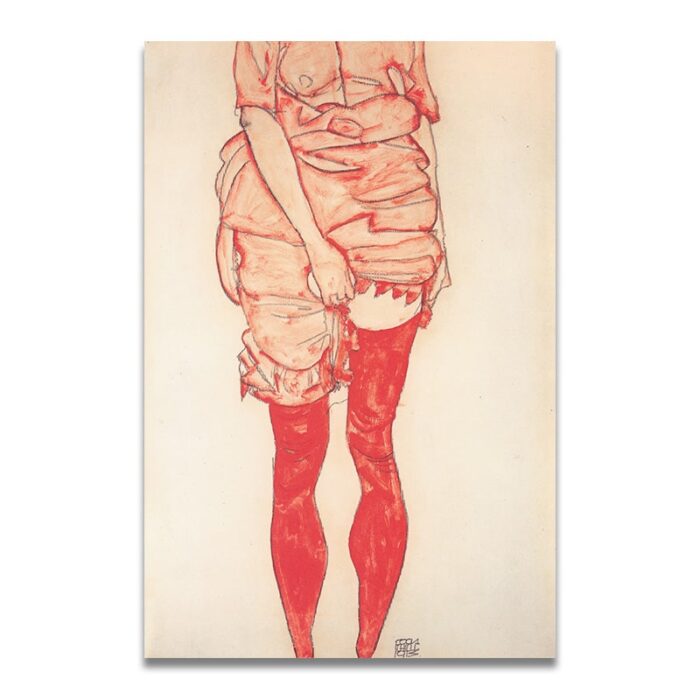
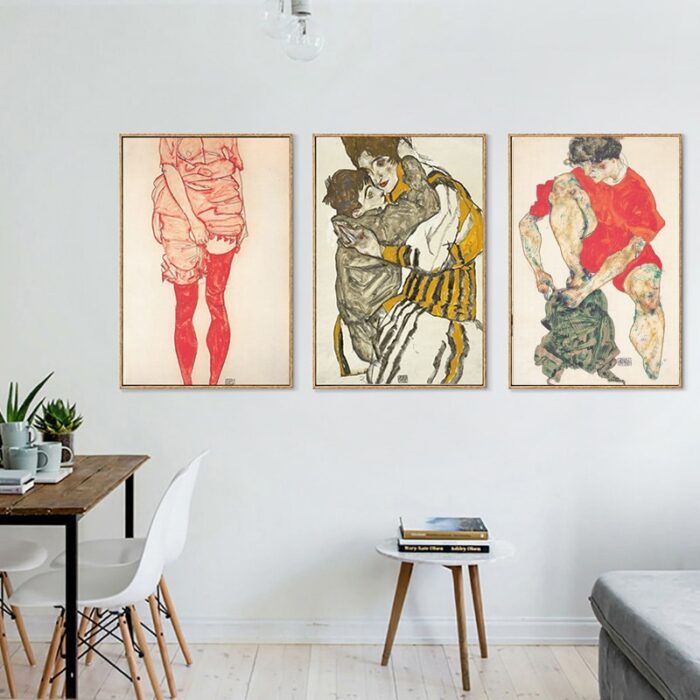
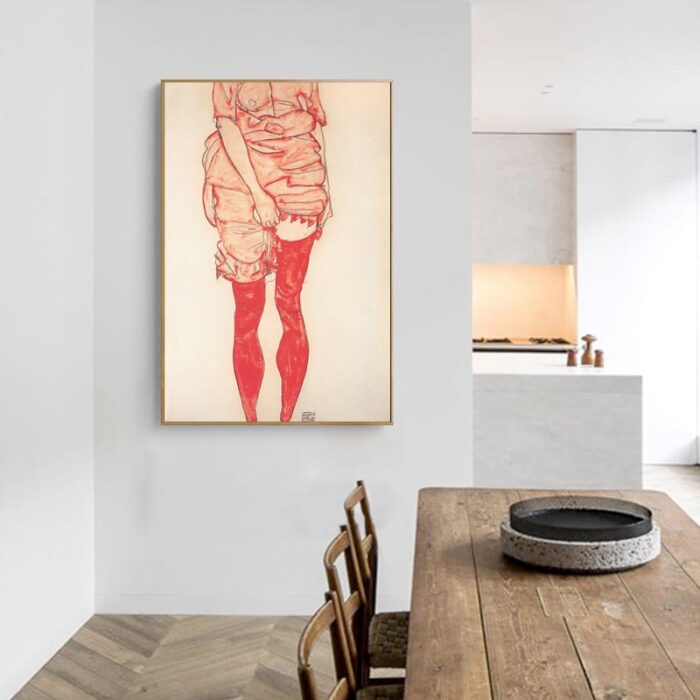
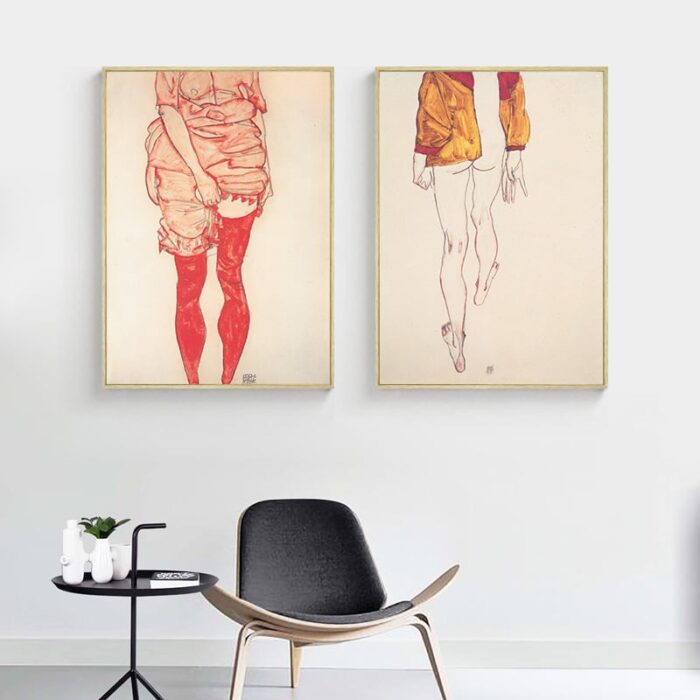

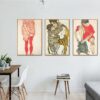
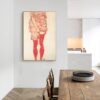
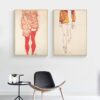
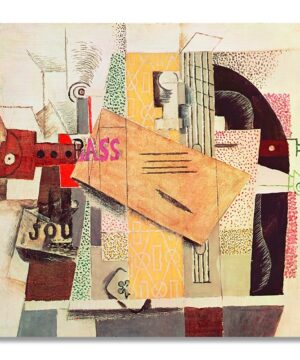
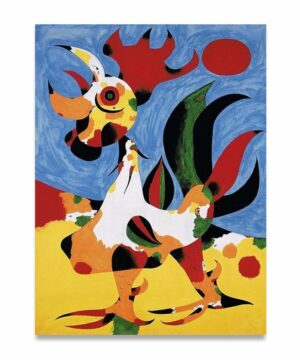
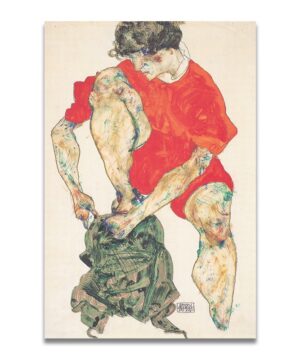
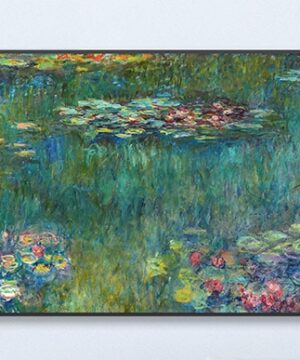
Reviews
There are no reviews yet.